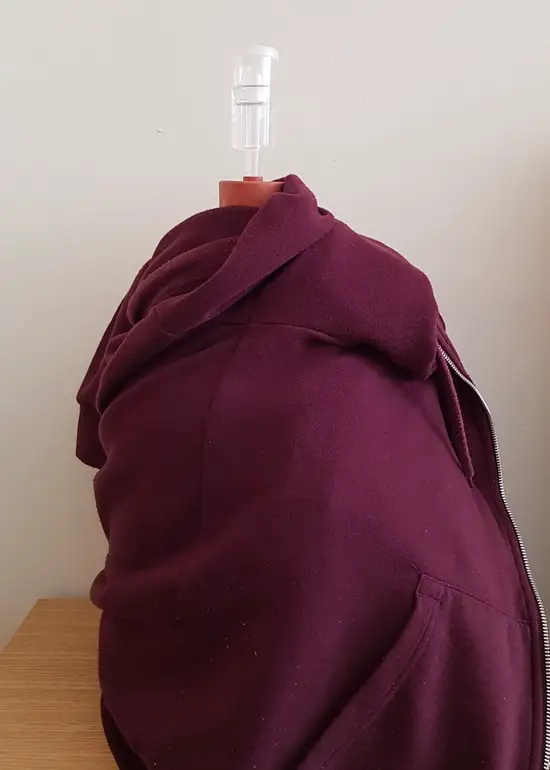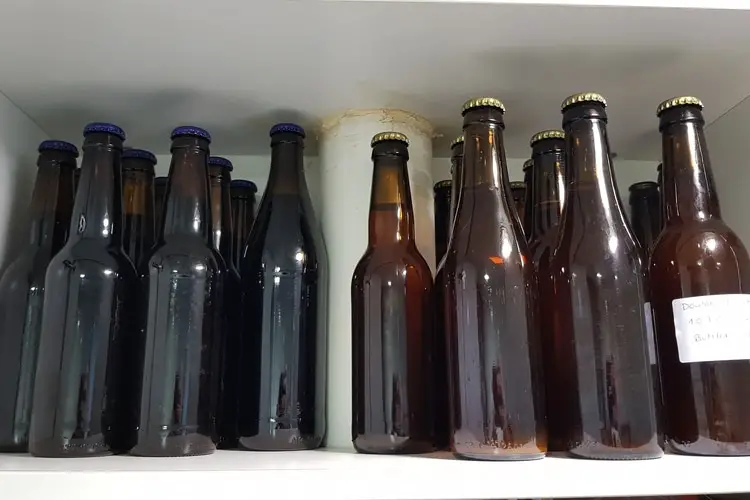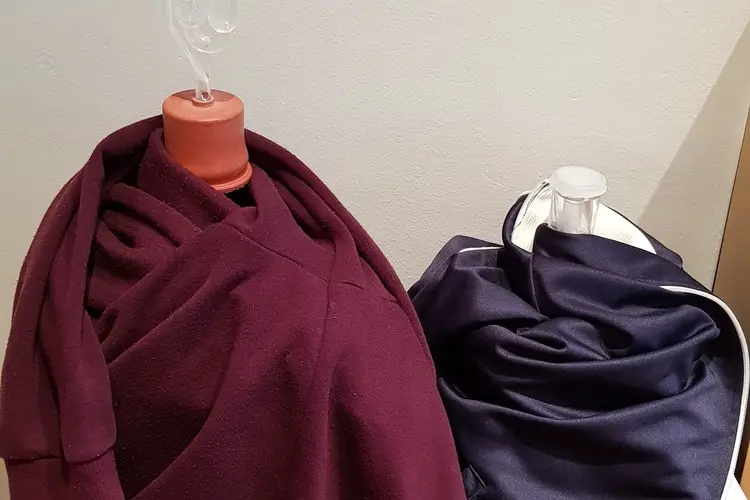Common wisdom holds that light is beer’s enemy. With few exceptions, beer is packaged in brown glass, aluminum, or steel. And what about fermenting beer? Must the brewer protect their fermenting beer also? Yes, do it.
If fermenting in glass, cover the beer with a towel or t-shirt. If using opaque plastic or steel, it is not an issue. As light strikes, it creates an irreversible chemical reaction. The beer becomes skunky or sulphury. It is irreversible.
It happens in natural or artificial light, especially the fluorescents at the market. It should be easy to avoid as most enjoy cool or cold beer anyway.
What will happen if a beer gets exposed to light?
Light causes riboflavin (a natural B-vitamin in malt) to interact with hop alpha acids. It can happen in a matter of minutes in the direct sun, and within hours if beer is stored even in indirect light.
The first thing that strikes is the smell.
A sour smell, coined skunky, by consumers worldwide who partake of Corona, Rolling Rock, and the prolific beer produced out of Holland, Heineken: all packaged in clear or green glass.
To me, it tasted soapy, and as a teen, that is why I hated beer so much.
After drinking Heineken one night when I was otherwise hazy with other recreational activities, it had me retching and left a lasting psychological impression.
It literally took me 6 years to truly get over that one.
Ironically, Heineken is the most popular import in Taiwan, my current home. I believe ours is brewed in Singapore or Malaysia. Strangely enough, not my favorite, but much cleaner than the beer of my youth.
What is light-struck?
Light-struck is when beer’s flavor is fundamentally and irreversibly changed by direct or indirect contact with sunlight or artificial ultraviolet light.
Technically, when light overtakes a beer a chemical reaction occurs wherein 3-methyl-2-butene-1-thiol is formed. There are many names for this bizarre compound, Prenyl mercaptan, Isopentenylmercaptane, and 3-methylsulfanylhexyl acetate.
Choose the one that suits. Skunky is better, and easier to remember. None would reprimand us for this lay beer term if used correctly.
It mostly occurs in finished beer but could affect fermenting beer as well, especially highly hopped ones.
It will occur slowly in stored beer in indirect light. Beer distributors are more aware of it now, but in past years, say 1980 – 2000 for example, beer was stored at room temp and faced warehouse lights all the live-long day.
If a longstanding commercial staples Sammy Smith, Heineken, Rolling Rock, Newcastle Brown (another clear bottle), were stored under light, no matter, they were deemed more stable than American craft brews anyway.
The average distributor attitude was:
- They could handle punishment.
- Proper transport, handling, storage was an afterthought.
- The 3-methylsulfanylhexyl acetate was part of their flavor profile.
- Nobody cares.
True enough, many beers have unique profiles, people consider unique and even desirable when in fact they are flaws.
Light-struck is one of them.
How to avoid / control light-struck beer?

If brewing beer, as noted above keep covered with a shirt or cloth.
If drinking beer from a glass, do not put it in the direct sun. It can turn in minutes.
For fermenting beer
Even indirect sun and artificial light will affect it.
Cover it rudimentarily and there will be zero problems.
With lower hopped beers like Lagers or Belgian Ales, it is less worrisome.
It is a reaction with riboflavin and hop acids that cause the problem.
These are steps I take with any beer, hoppy or not, Heineken profile or not.
Larger commercial breweries have vast resources at hand, including laboratories.
They may utilize chemically modified hop alpha acids which haven’t this adverse reaction to riboflavin and light.
In today’s saturated (more like swampland) market, the companies persist in green or clear glass for differentiation.
If skunky, their customers desire it, and if not, people keep coming back for the flavor.
Some of them can be superior quality beers. As an increasingly beer-knowledgeable public consumes, they will be wary of clear and green glass.
Buying and packaging
The best path is to buy or package beer in cans or brown bottles.
These days there are so many nifty beer contraptions for brewing beer, including kegging systems and the ubiquitous brown glass.
Kegs are easy and fast.
2 examples I like:
There are likely still old Pepsi Cola kegs floating around from the 90’s since everyone changed over to syrup.
Twenty-Four brown bottles new cost about $45. I-YA, as we say here in the East!
I never bought a bottle, not one. Go to any bar with premium beer. They throw them away by the thousands each week. Gather what you need.
Soak, rinse, and sanitize and they are good as new. B-Brite is especially good at getting labels off quickly. I preferred bleach as it’s cheap and easy.
Much more about bottle preparation in the article, How to Reuse Beer Bottles for Homebrew?
I have used green Grolsch bottles. They are aesthetically nice (custom-molded with pop-stoppers) and you can reuse the rubber grommets. They will let in light to a high degree, so I kept them in the closet.
Problem solved.

Another article that may help save money is, Homebrewing on a Budget: 7 Tips to Saving Money.
How much and how long is too much light?
As a rule of thumb, keep homebrewed beer covered. Minimize light exposure during fermentation and storage (bulk vessels). Packaged beer ages best in a cool dark environment. As little as ten minutes in direct light and after 24 hours in indirect light beer will turn.
Here are some general guidelines.
As noted previously, using brown glass allows from 5 – 20 % of light to penetrate. Green glass is marginal at best allowing 50 – 75% of light ray through.
Clear glass, while nice for observation and bottle gazing allow up to 90% of light through.
These are guidelines only and the disparity accounts for direct light, indirect light, and length of exposure.
Use common sense in all preparations.
As a Master Brewer, a credential hard-earned, chock full of screw-ups and missteps, I‘ve repeatedly encouraged readers to adhere to a strict and exacting process. Stay meticulously clean and do not allow this discipline to lapse.
In this case, common sense is your best friend. Can we think of any food or beverage preparation where we put the food in the direct sunlight for storage or preparation? Very few.
I can think of making Sun Tea or trying to sprout corn in a burlap sack to make white liquor. (Lived in the NC mountains for 18 years – know a little about Corn liquor, also chocked full of dextrose).
There may be other examples. For beer, forget it.
In light of this issue
Keep beer, fermenting or packaged cool and dark. Light-struck should never be a problem for homebrewers.
If you like some of the commercial examples mentioned, which may or may not suffer from 3-methyl-2-butene-1-thiol (the Skunk) formation, taste is in the palate of the consumer.
Don’t worry about it. Enjoy it.

